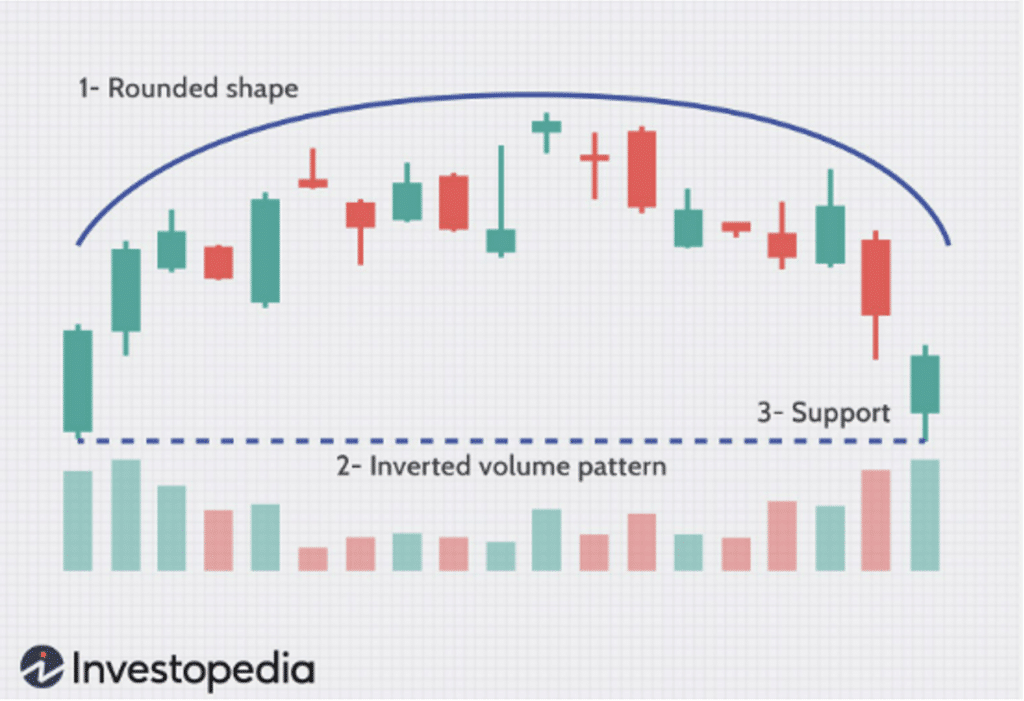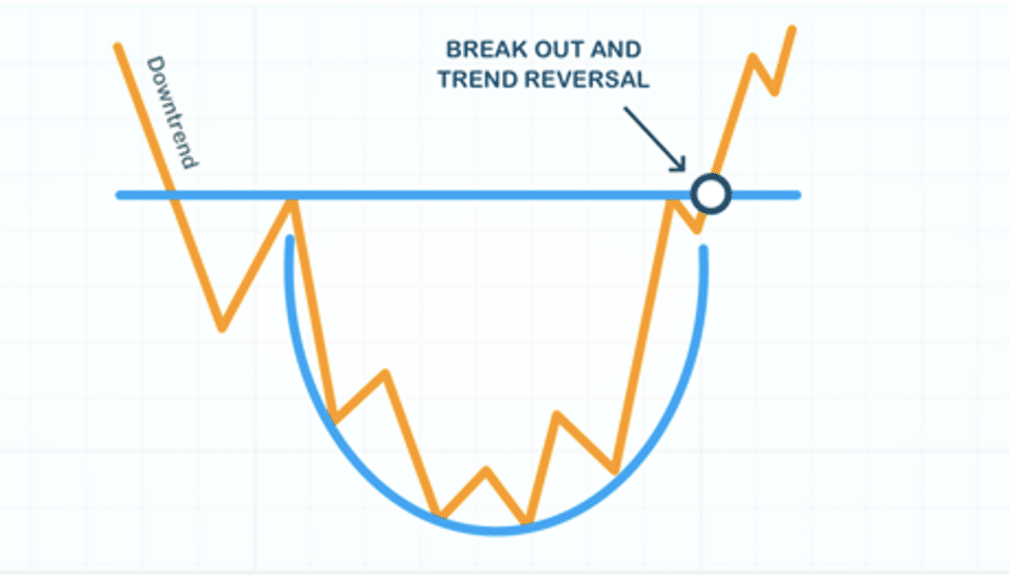What are Rounding Tops and Rounding Bottoms
Rounding Tops and Rounding Bottoms are reversal patterns that are slow and considered but ultimately result in decisive trend-changing moves. Instead of the identifiable peaks and troughs that come with spotting other reversal patterns, the rounding reversals are more of a gradual base or top pattern. Rounding tops can also be known as saucer tops. Rounding bottoms can also be referred to as saucer bottoms.
The pattern for a rounding top comes at the end of an uptrend phase. It gradually changes from an uptrend, into a sideways trend and then finally into a new downtrend. It develops into a broadened “n” shape. The rounding bottom is the development from a downtrend to sideways and then a new uptrend. It comes as a broadened “u” shape as the price swings higher.
Rounding patterns are best identified in conjunction with trading volume.
- Rounding bottom pattern – Unlike a “V” shaped bottom which tends to be characterised by a big volume spike sell-off at the low, in often aggressive moves, a rounding bottom shows more gradual changes in both price and volume. Volume is likely to be heavier as the selling begins, but towards the bottom, volume tends to tail off as the sellers become exhausted. Once the trough in the price has been reached and the price gradually starts to rise again, the trading volume begins to pick up again.
- Rounding top pattern – As the price rise begins to decelerate, the volume gradually dissipates. There is no aggressive blow-off top, the bulls retreat with a whimper. Subsequently, volume dissipates as the price gradually begins to roll over. As the price begins to fall, the volume picks up as interest grows in the new trend.
The problem with completion… and confirmation
We have previously covered Double Tops, Double Bottoms, Triple Tops and Triple Bottoms. These patterns have definable peaks and troughs before a decisive break through a neckline to complete the pattern. Arguably part of the issue with the rounding reversals is that there is little decisive definition to the pattern.
This leads to the question, “when is the pattern complete?”. There is often no definable key level that is breached to complete a rounding reversal.
For a Rounding Top, the breaching of the first important support following the rounding pattern could be taken as a signal. This old support can then be taken as a pseudo-neckline for the top.

Similarly, for a Rounding Bottom, a breakout above the first key resistance after the price has started to move higher from the pattern. The old resistance can then be taken as a pseudo neckline of the base.

Implied targets – another problem
The implied targets for Rounding Tops and Rounding Bottoms are far less decisive than for other reversal patterns. The reason is that the necklines of the patterns can be very arbitrary. Perhaps more so than most reversals, they should be viewed as a broad change in market direction.
If a neckline can be identified, then the usual technique of measuring the magnitude of the pattern and projecting it from the neckline can be used. However, with an often lack of a clear, definitive neckline, the targets on rounding reversals come with a limited conviction.